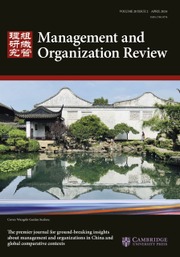While family businesses have deep roots in Chinese culture, they have experienced ups and downs over the past seven decades after the establishment of the People’s Republic of China in 1949. Private enterprises, including family firms, were first largely dismantled as the economy shifted toward state ownership and control. However, with the initiation of economic reforms in 1978, family businesses revived and flourished, with entrepreneurship emerging in every industry and in every corner of society. Today family businesses are a vital part of China’s economy.
However, despite a strong linkage between family systems and entrepreneurship in China, systematic theorization and empirical examination are limited. Defining family dynamics as substantial family transitions that often include structural change in the family system and altered relationships (and hierarchies) among family members, this special issue, led by guest editors David Ahlstrom, James Chrisman, Hanqing (Chevy) Fang, and Bin Liu, explores in depth how family dynamics and entrepreneurship are intertwined in China. In the lead article, the guest editorial team proposes a dual tuning model to highlight how entrepreneurial and family firms strategically synchronize internal and external temporal rhythms to manage conflicts and optimize performance.
After two years of tireless effort from the guest editorial team and authors, I am proud to present this special issue to you. The lead article, seven research papers, and one commentary included in this special issue offer many groundbreaking insights related to the relationship between family dynamics and entrepreneurship. Collectively, they provide detailed descriptions about (a) the historical origins of family firms and how changing family dynamics affect these firms’ international investment decisions; (b) the impact of intergenerational capital endowments and parental mentoring on entrepreneurial intentions and operations; and (c) how family governance and family culture influence family firms’ innovation and competitive advantage.
I hope you enjoy every article in this special issue. Thank you for your attention.


